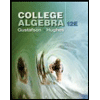1 Infinite Series, Power Series 2 Complex Numbers 3 Linear Algebra 4 Partial Differentitation 5 Multiple Integreals 6 Vector Analysis 7 Fourier Series And Transforms 8 Ordinary Differential Equations 9 Calculus Of Variations 10 Tensor Analysis 11 Special Functions 12 Series Solutions Of Differential Equations; Legendre, Bessel, Hermite, And Laguerre Functions 13 Partial Differential Equations 14 Functions Of A Complex Variable 15 Probability And Statistics expand_more
14.1 Introduction 14.2 Analytic Functions 14.3 Contour Integrals 14.4 Laurent Series 14.5 The Residue Theorem 14.6 Methods Of Finding Residues 14.7 Evaluation Of Definite Integrals By Use Of The Residue Theorem 14.8 The Point At Infinity; Residues At Infinity 14.9 Mapping 14.10 Some Applications Of Conformal Mapping 14.11 Miscellaneous Problems expand_more
Problem 1P: Find the real and imaginary parts u(x,y) and v(x,y) of the following functions. z3 Problem 2P: Find the real and imaginary parts u(x,y) and v(x,y) of the following functions. z Problem 3P: Find the real and imaginary parts u(x,y) and v(x,y) of the following functions. z Problem 4P: Find the real and imaginary parts u(x,y) and v(x,y) of the following functions. z Problem 5P: Find the real and imaginary parts u(x,y) and v(x,y) of the following functions. Re z Problem 6P: Find the real and imaginary parts u(x,y) and v(x,y) of the following functions. ez Problem 7P: Find the real and imaginary parts u(x,y) and v(x,y) of the following functions. coshz Problem 8P: Find the real and imaginary parts u(x,y) and v(x,y) of the following functions. sinz Problem 9P: Find the real and imaginary parts u(x,y) and v(x,y) of the following functions. 1z Problem 10P: Find the real and imaginary parts u(x,y) and v(x,y) of the following functions. 2z+3z+2 Problem 11P: Find the real and imaginary parts u(x,y) and v(x,y) of the following functions. 2ziiz+2 Problem 12P: Find the real and imaginary parts u(x,y) and v(x,y) of the following functions. zz2+1 Problem 13P: Find the real and imaginary parts u(x,y) and v(x,y) of the following functions. lnz Problem 14P: Find the real and imaginary parts u(x,y) and v(x,y) of the following functions. z2z Problem 15P: Find the real and imaginary parts u(x,y) and v(x,y) of the following functions. ez Problem 16P: Find the real and imaginary parts u(x,y) and v(x,y) of the following functions. z2z2 Problem 17P: Find the real and imaginary parts u(x,y) and v(x,y) of the following functions. cosz Problem 18P: Find the real and imaginary parts u(x,y) and v(x,y) of the following functions. z Problem 19P: Find the real and imaginary parts u(x,y) and v(x,y) of the following functions. lnz(Use02.) Problem 20P: Find the real and imaginary parts u(x,y) and v(x,y) of the following functions. (1+2i)z2+(i1)z+3 Problem 21P: Find the real and imaginary parts u(x,y) and v(x,y) of the following functions.... format_list_bulleted


 College Algebra (MindTap Course List)AlgebraISBN:9781305652231Author:R. David Gustafson, Jeff HughesPublisher:Cengage Learning
College Algebra (MindTap Course List)AlgebraISBN:9781305652231Author:R. David Gustafson, Jeff HughesPublisher:Cengage Learning Linear Algebra: A Modern IntroductionAlgebraISBN:9781285463247Author:David PoolePublisher:Cengage LearningAlgebra & Trigonometry with Analytic GeometryAlgebraISBN:9781133382119Author:SwokowskiPublisher:Cengage
Linear Algebra: A Modern IntroductionAlgebraISBN:9781285463247Author:David PoolePublisher:Cengage LearningAlgebra & Trigonometry with Analytic GeometryAlgebraISBN:9781133382119Author:SwokowskiPublisher:Cengage

